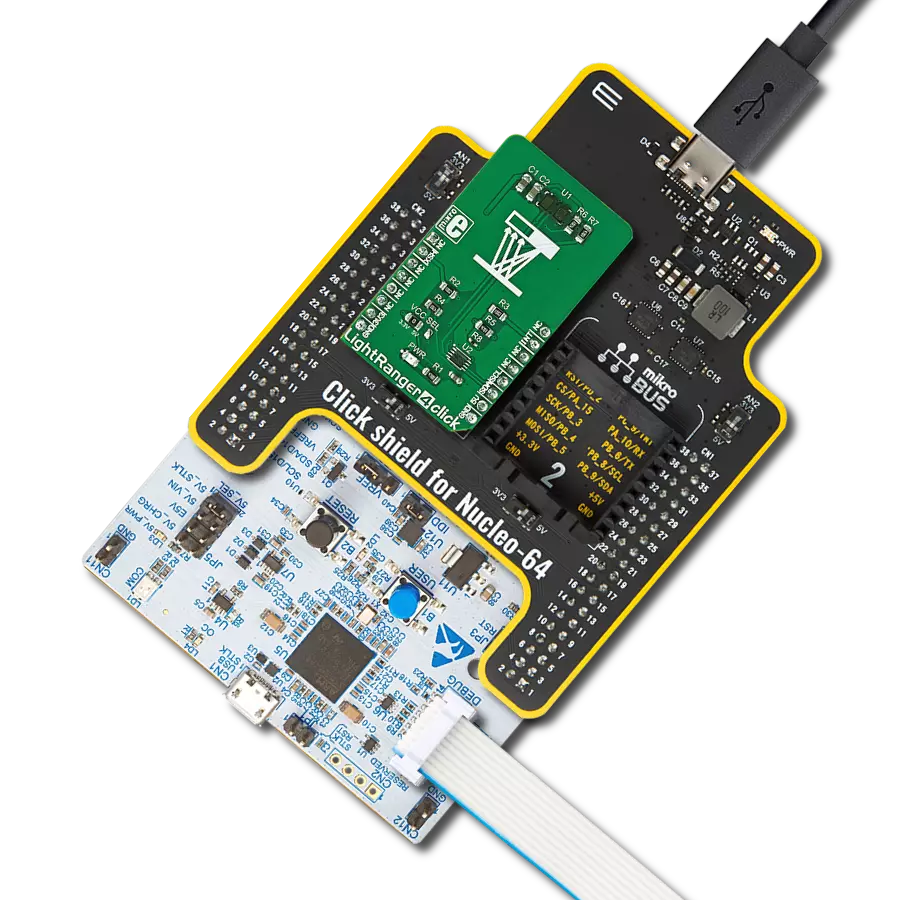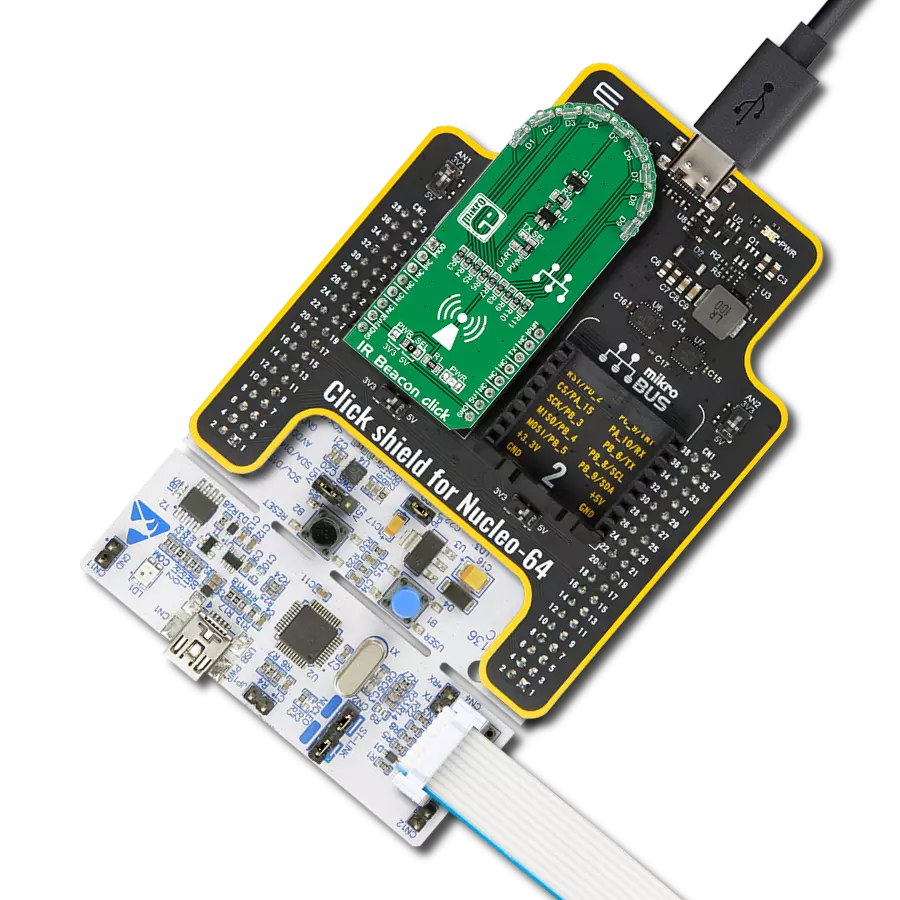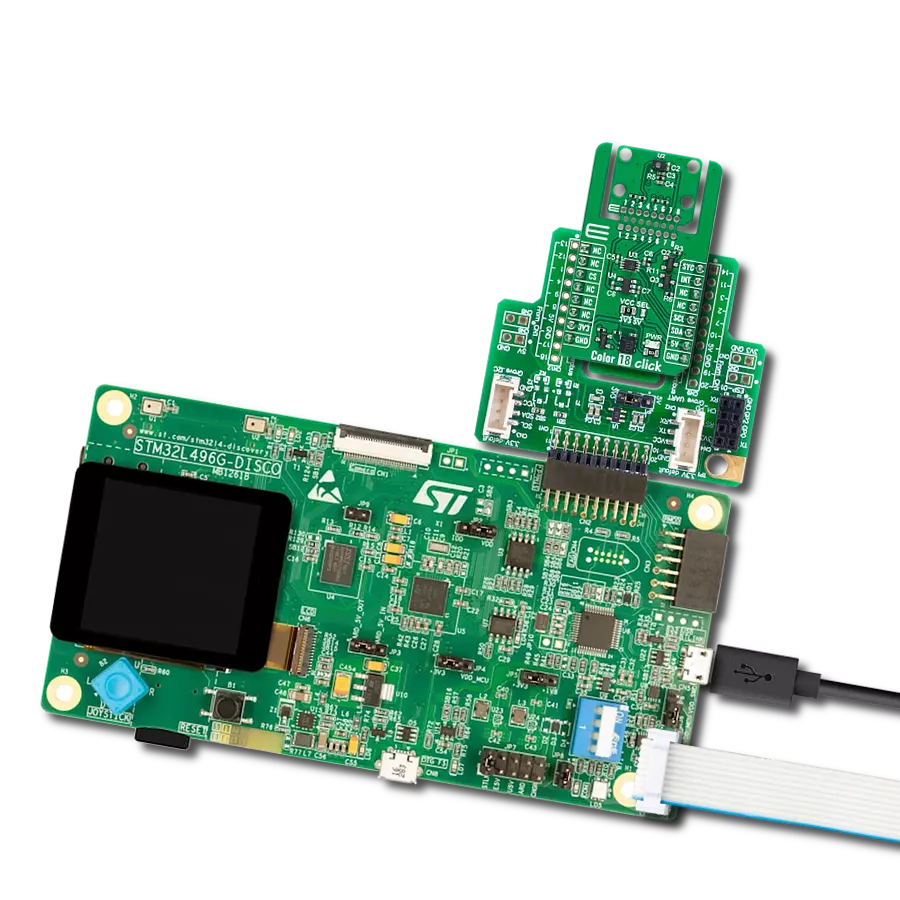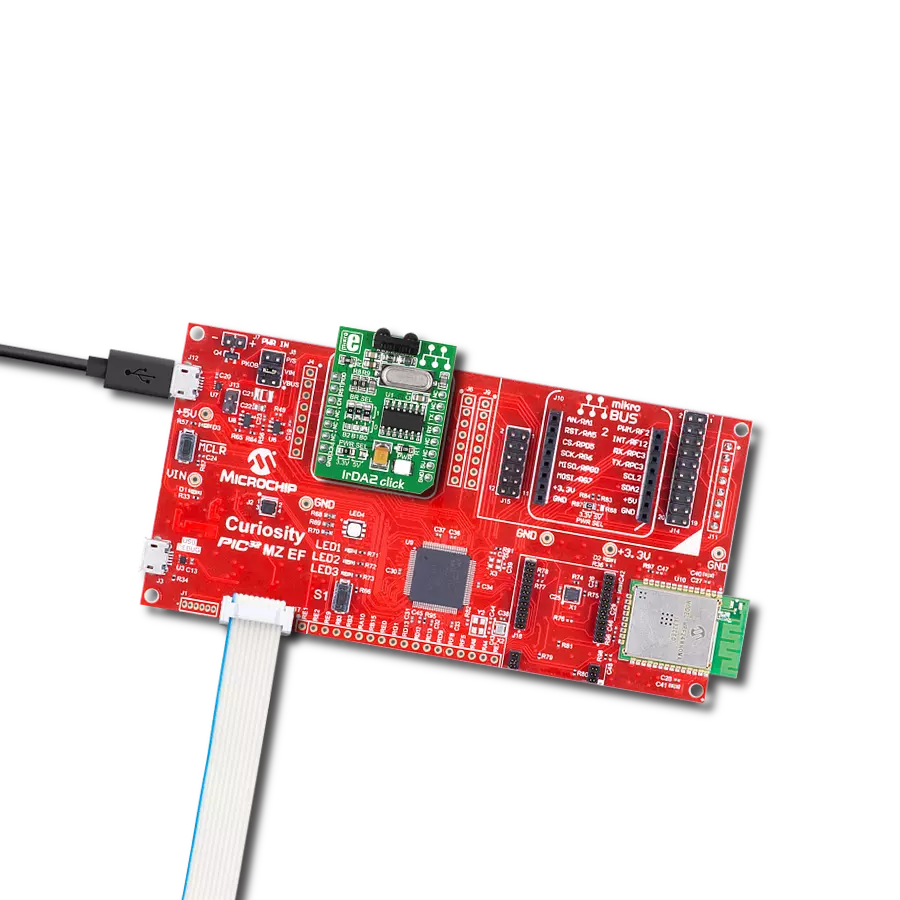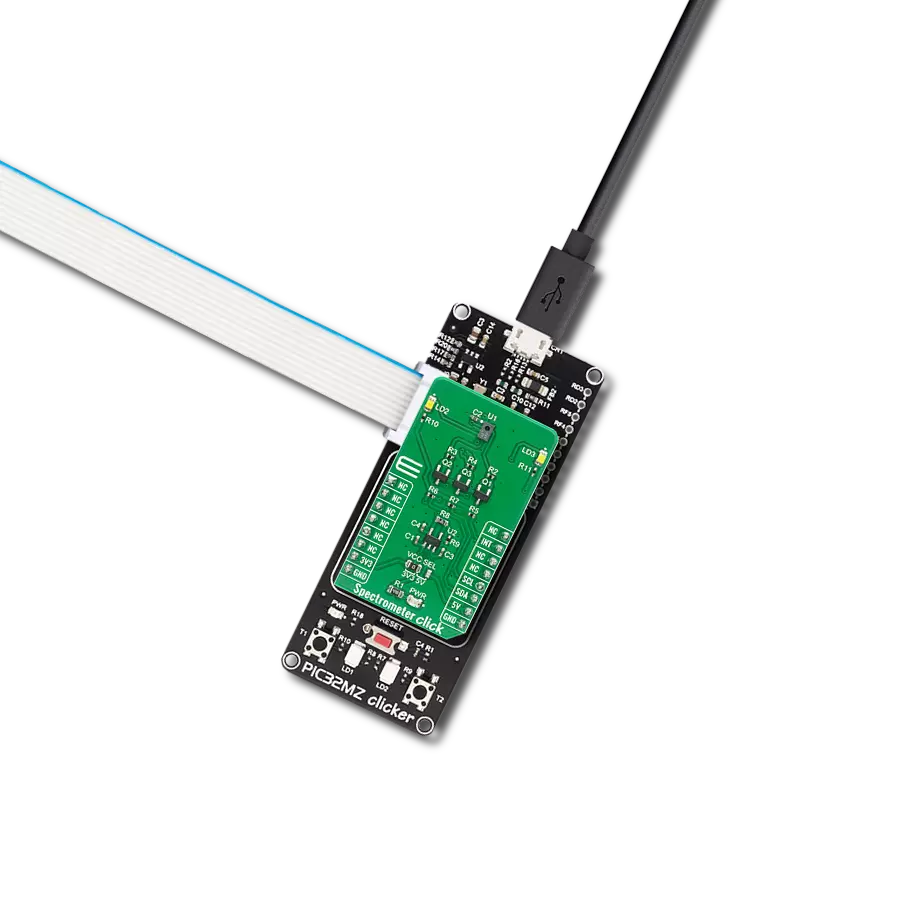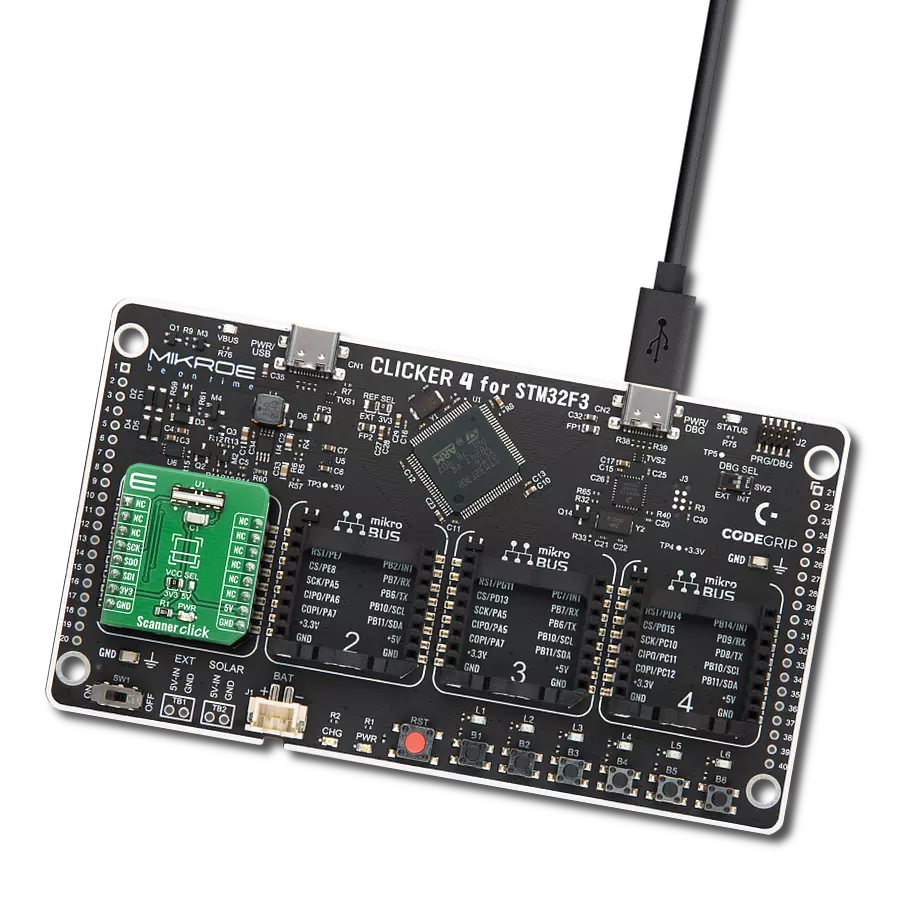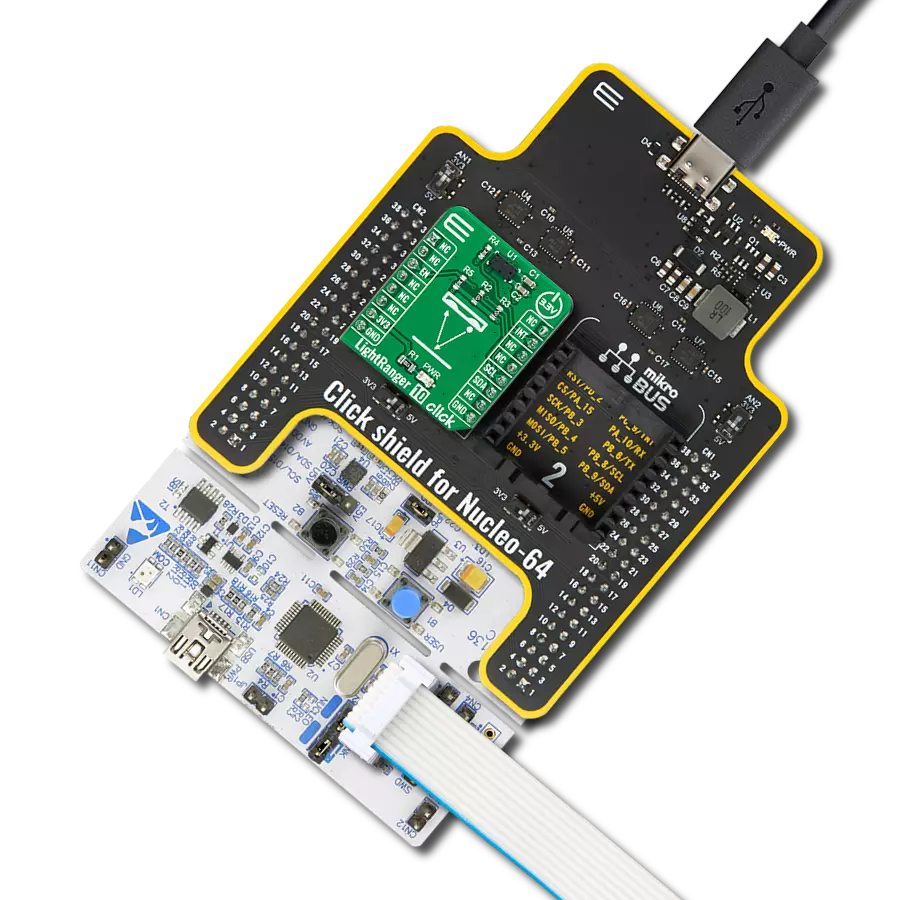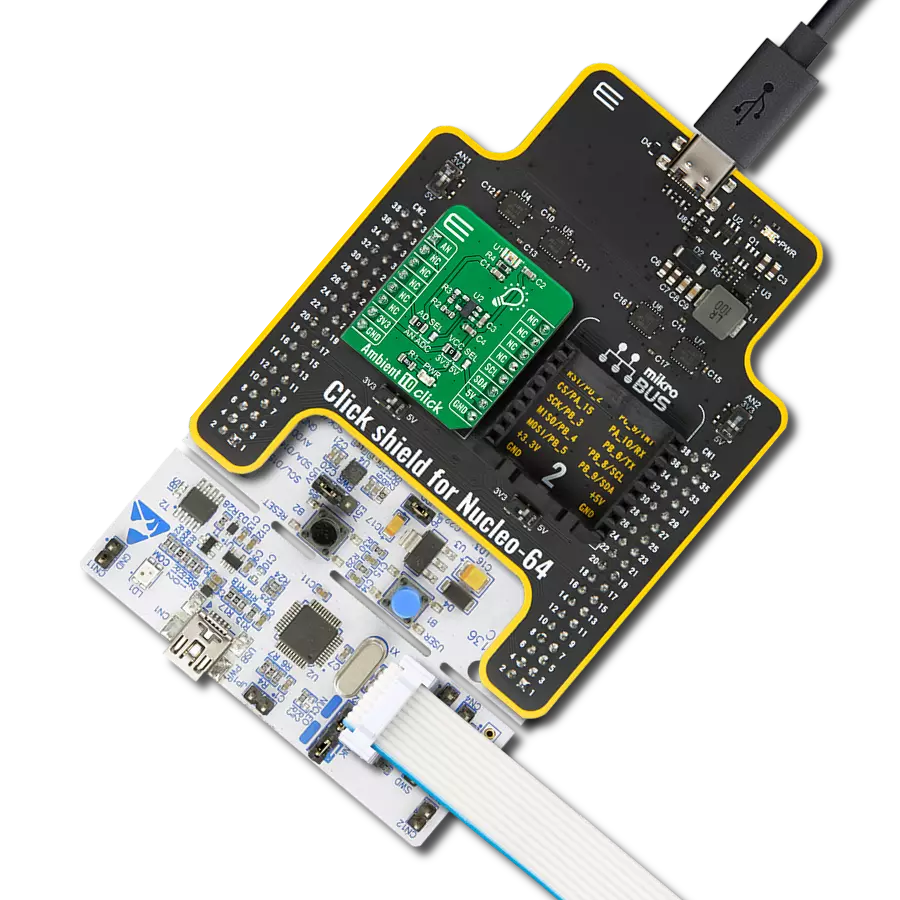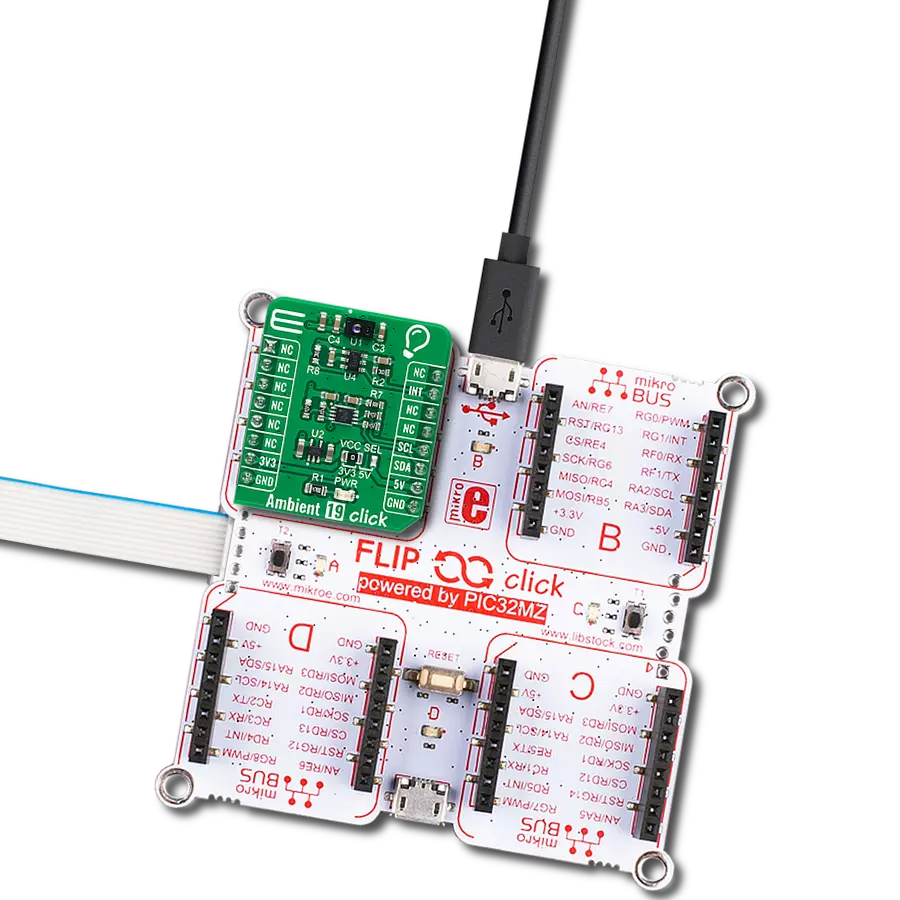Facilitate secure and high-speed data transfer between devices, supporting various data-sharing use cases
A
A
Hardware Overview
How does it work?
IR Beacon Click is based on the nine VSMB2948SLs, high-speed infrared emitting diodes from Vishay Semiconductors. The VSMB2948SL is a 940nm wavelength infrared emitting diode in a GaAIAs multi-quantum well (MQW) technology with high radiant power, high radiant intensity, and high speed molded in a clear untinted package with a lens. This kind of architecture allows the IR wave to have a half-intensity angle of ±25 degrees and a range of
up to half of a meter that can be increased by stacking multiple IR Beacon Clicks onto the same mikroBUS™ socket. The IR Beacon uses either UART or PWM lines of the mikroBUS™ socket, selected over the TX SEL jumpers, with PWM chosen by default, to allow the host MCU to transmit a signal to a target receiver. The mainboard MCU drives the infrared diodes through the MOD pin, providing a carrier signal that can be adjusted to match the frequency.
This Click board™ can operate with either 3.3V or 5V logic voltage levels selected via the PWR SEL jumper. This way, both 3.3V and 5V capable MCUs can use the communication lines properly. Also, this Click board™ comes equipped with a library containing easy-to-use functions and an example code that can be used as a reference for further development.
Features overview
Development board
EasyPIC v7 is the seventh generation of PIC development boards specially designed to develop embedded applications rapidly. It supports a wide range of 8-bit PIC microcontrollers from Microchip and has a broad set of unique functions, such as a powerful onboard mikroProg programmer and In-Circuit debugger over USB-B. The development board is well organized and designed so that the end-user has all the necessary elements in one place, such as switches, buttons, indicators, connectors, and others. With four different connectors for each port, EasyPIC v7 allows you to connect accessory boards, sensors, and custom electronics more efficiently than ever. Each part of
the EasyPIC v7 development board contains the components necessary for the most efficient operation of the same board. An integrated mikroProg, a fast USB 2.0 programmer with mikroICD hardware In-Circuit Debugger, offers many valuable programming/debugging options and seamless integration with the Mikroe software environment. Besides it also includes a clean and regulated power supply block for the development board. It can use various external power sources, including an external 12V power supply, 7-23V AC or 9-32V DC via DC connector/screw terminals, and a power source via the USB Type-B (USB-B) connector. Communication options such as
USB-UART and RS-232 are also included, alongside the well-established mikroBUS™ standard, three display options (7-segment, graphical, and character-based LCD), and several different DIP sockets. These sockets cover a wide range of 8-bit PIC MCUs, from PIC10F, PIC12F, PIC16F, PIC16Enh, PIC18F, PIC18FJ, and PIC18FK families. EasyPIC v7 is an integral part of the Mikroe ecosystem for rapid development. Natively supported by Mikroe software tools, it covers many aspects of prototyping and development thanks to a considerable number of different Click boards™ (over a thousand boards), the number of which is growing every day.
Microcontroller Overview
MCU Card / MCU
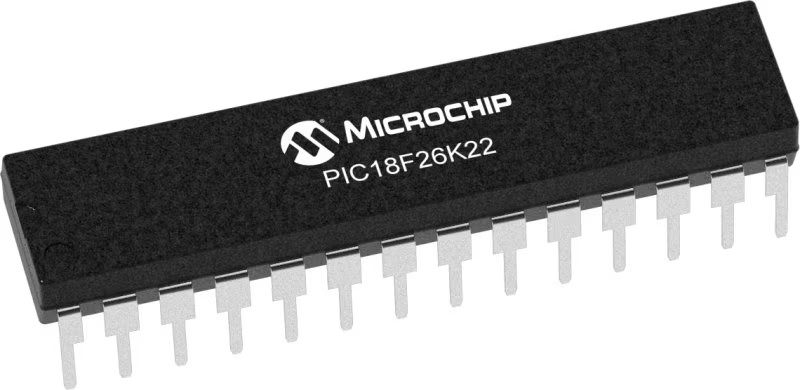
Architecture
PIC
MCU Memory (KB)
64
Silicon Vendor
Microchip
Pin count
28
RAM (Bytes)
3896
Used MCU Pins
mikroBUS™ mapper
Take a closer look
Click board™ Schematic

Step by step
Project assembly
Software Support
Library Description
This library contains API for IR Beacon Click driver.
Key functions:
irbeacon_enable_mod- Enable MOD functionirbeacon_disable_mod- Disable MOD functionirbeacon_reset_mod- Reset MOD function
Open Source
Code example
The complete application code and a ready-to-use project are available through the NECTO Studio Package Manager for direct installation in the NECTO Studio. The application code can also be found on the MIKROE GitHub account.
/*!
* @file
* @brief IrBeacon Click example
*
* # Description
* This library contains an API for the IrBeacon Click driver.
* This application is suitable for high pulse current operation.
*
* The demo application is composed of two sections :
*
* ## Application Init
* Enables GPIO and PWM, sets the frequency and duty cycle and enables PWM.
*
* ## Application Task
* This is a example which demonstrates the use of IR Beacon Click board.
* It shows how to enable the device and gradualy increase the duty cycle.
* Results are being sent to the Usart Terminal where you can track their changes.
*
* @author Nikola Peric
*
*/
// ------------------------------------------------------------------- INCLUDES
#include "board.h"
#include "log.h"
#include "irbeacon.h"
// ------------------------------------------------------------------ VARIABLES
static irbeacon_t irbeacon;
static log_t logger;
// ------------------------------------------------------ APPLICATION FUNCTIONS
void application_init ( void )
{
log_cfg_t log_cfg;
irbeacon_cfg_t cfg;
/**
* Logger initialization.
* Default baud rate: 115200
* Default log level: LOG_LEVEL_DEBUG
* @note If USB_UART_RX and USB_UART_TX
* are defined as HAL_PIN_NC, you will
* need to define them manually for log to work.
* See @b LOG_MAP_USB_UART macro definition for detailed explanation.
*/
LOG_MAP_USB_UART( log_cfg );
log_init( &logger, &log_cfg );
log_info( &logger, "---- Application Init ----" );
// Click initialization.
irbeacon_cfg_setup( &cfg );
IRBEACON_MAP_MIKROBUS( cfg, MIKROBUS_1 );
irbeacon_init( &irbeacon, &cfg );
irbeacon_pwm_start( &irbeacon );
log_info( &logger, "---- Application Task ----" );
Delay_ms ( 1000 );
}
void application_task ( void )
{
static int8_t duty_cnt = 1;
static int8_t duty_inc = 1;
float duty = duty_cnt / 10.0;
irbeacon_set_duty_cycle ( &irbeacon, duty );
irbeacon_enable_mod( &irbeacon );
log_printf( &logger, "Duty: %d%%\r\n", ( uint16_t )( duty_cnt * 10 ) );
Delay_ms ( 500 );
if ( 10 == duty_cnt )
{
duty_inc = -1;
}
else if ( 0 == duty_cnt )
{
irbeacon_disable_mod( &irbeacon );
duty_inc = 1;
}
duty_cnt += duty_inc;
}
int main ( void )
{
/* Do not remove this line or clock might not be set correctly. */
#ifdef PREINIT_SUPPORTED
preinit();
#endif
application_init( );
for ( ; ; )
{
application_task( );
}
return 0;
}
// ------------------------------------------------------------------------ END
















